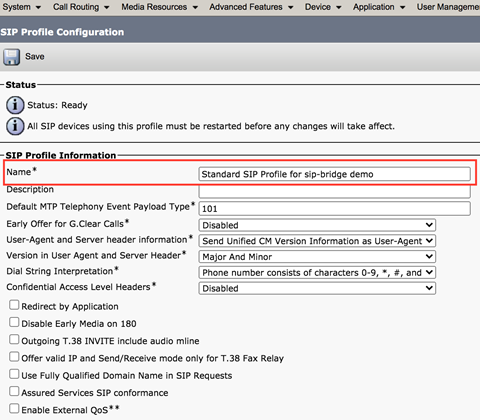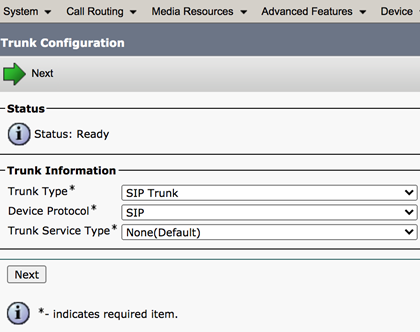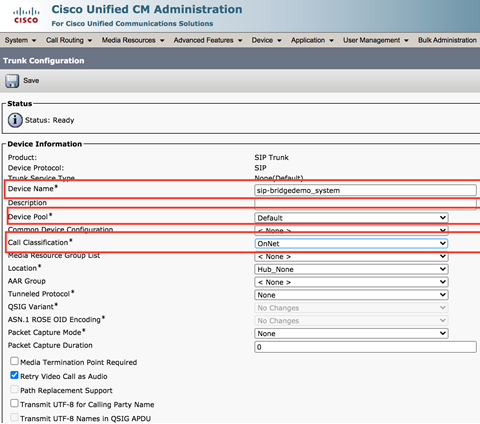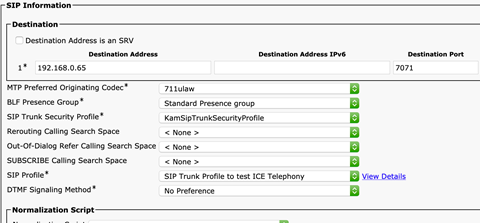Creating a SIP Trunk
Complete the following procedures to create a SIP trunk channel.
To verify CUCM service activity
1. Verify the Cisco CallManager Service is activated on CUCM
A. From the Cisco Unified CM Administration page, go to the Navigation field at the top right corner and click Cisco Unified Serviceability.
B. Click Go.
C. Under Tools, click Service Activation.
D. Verify that Cisco CallManager is activated:


2. Create a SIP Profile
A. From the Cisco Unified CM Administration page, navigate to Device > Device Settings > SIP Profile.
B. Click Standard SIP Profile.
C. From the SIP Profile Configuration screen, click Copy.
D. Complete the rest of the SIP Profile as needed:


a. Select Allow Presentation Sharing using BFCP, if BFCP (Dual video / presentation sharing) is required.
b. Select Use Fully Qualified Domain in SIP Requests, if needed.
c. Click Save.
3. Create a SIP Trunk Device
A. From the Cisco Unified CM Administration page, navigate to Device > Trunks.
B. Click Add New.


C. Click Next.
D. Configure the Device Information fields as described below:


Enable as shown below:

Enable options as described below:

Enter the IP address of the ICE Telephony Gateway. This must be the same IP address entered for Common Name in the Generate a self-signed certificate field (.pem) and the Create a SIP Trunk Security Profile sections above.
5061. Must match the sip_tls_port property configured at $ICET_HOME/conf/icet_conf.json. This is the SIP TLS port on which the ICE Telephony Gateway is listening for incoming TLS connections.
Enter the name of the SIP Trunk that was created above.
4. Click Save.
5. Click Reset.
6. Proceed to the next procedure (Creating a Rout Pattern for the SIP Trunk).